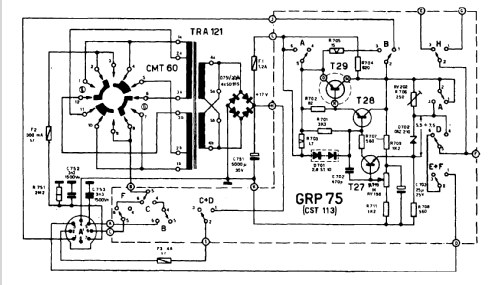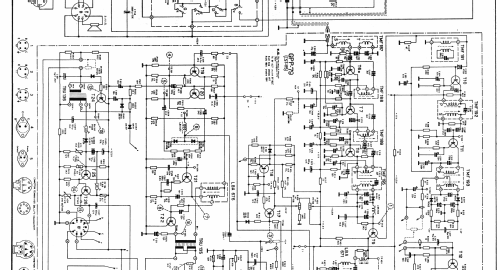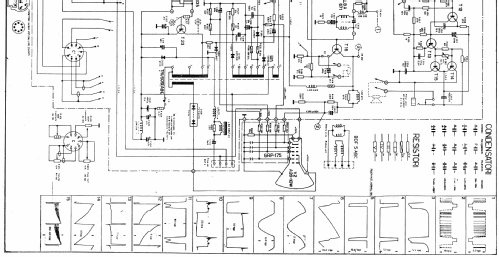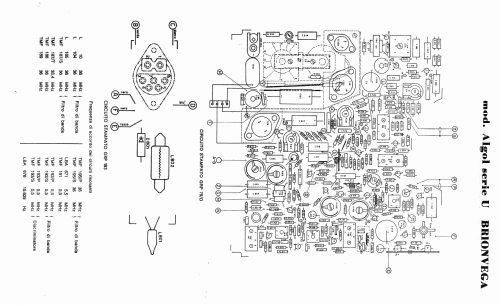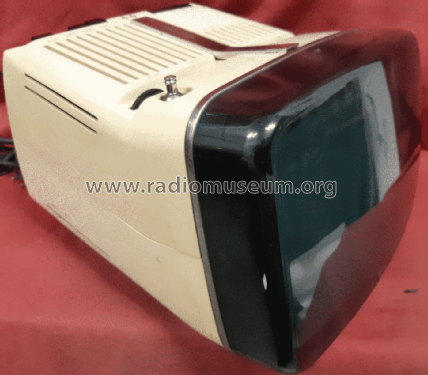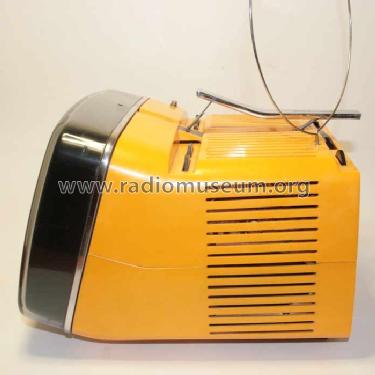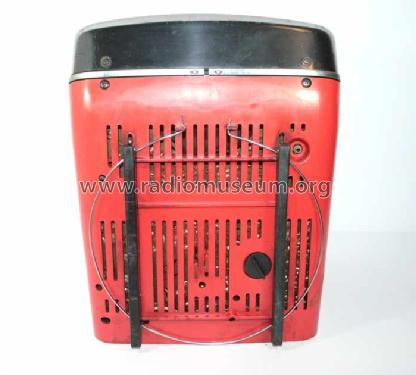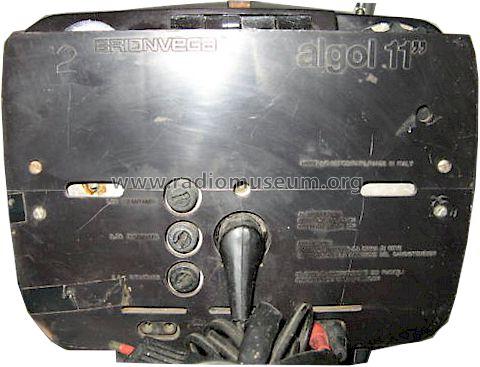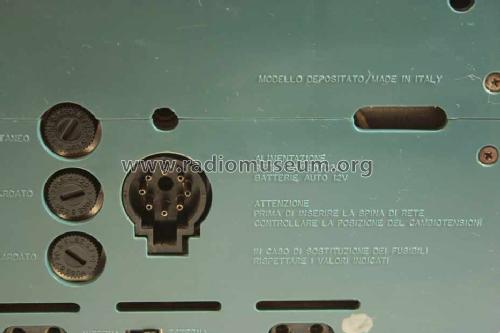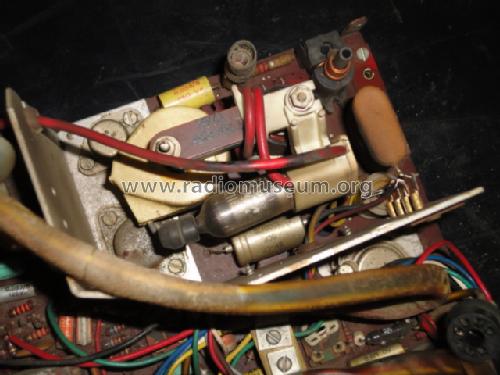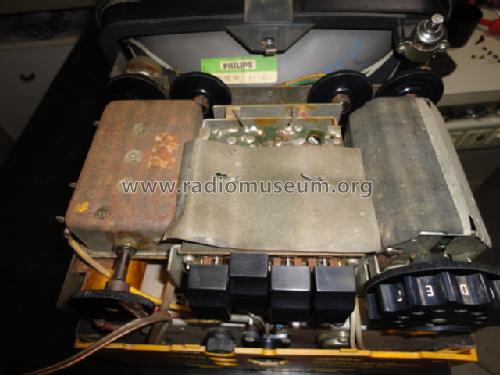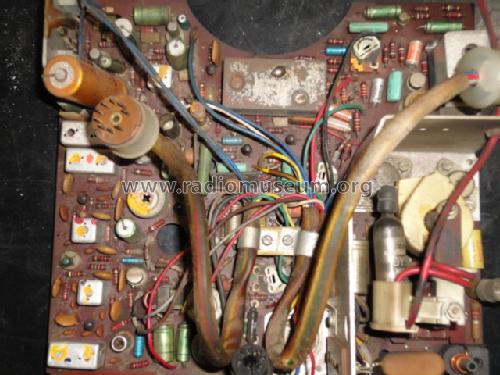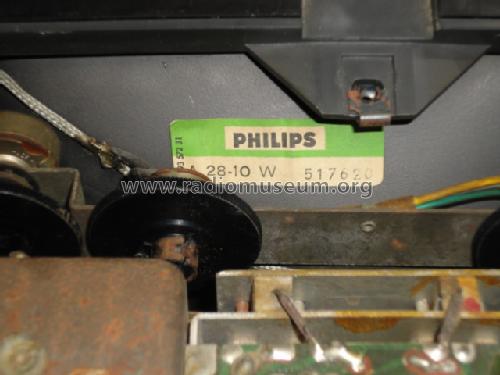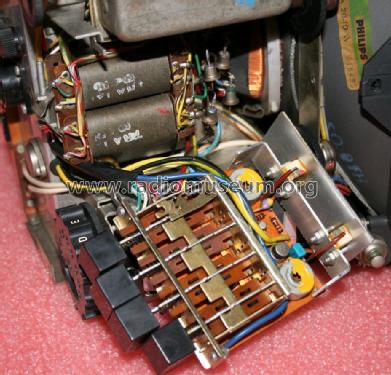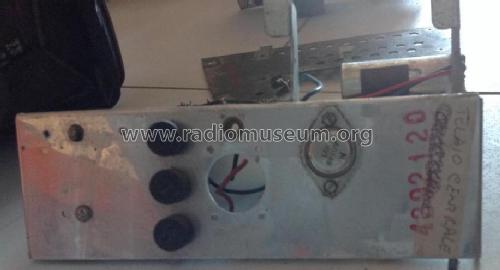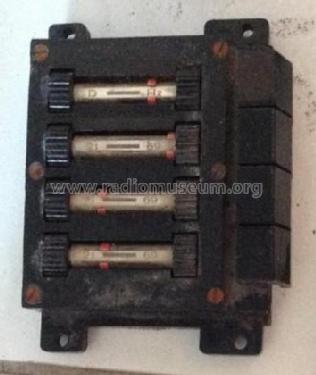- País
- Italia
- Fabricante / Marca
- Vega, BP Radio, Brionvega, Brion & Pajetta; Milano, Lissone (MI)
- Año
- 1964–1971
- Categoría
- Televisión (TV) o monitor
- Radiomuseum.org ID
- 172137
Haga clic en la miniatura esquemática para solicitarlo como documento gratuito.
- Numero de valvulas
- 2
- Numero de transistores
- 29
- Semiconductores
- AF139 AF109 BF163 BF159 AF126 BF160 AC141 AC138 AC142 BF178 or. BF174 BC281 or. BC178 or. BC262 or. BC252 BC107 or. BC171 or. BC280 or. BC176 BC301 or. BFY50 or. BC119 AU110 BC303 or. BFX88 or. IW9837 AC127 AD149
- Principio principal
- Superheterodino en general
- Gama de ondas
- VHF/UHF (see notes for details)
- Tensión de funcionamiento
- Red / Acumuladores (posiblemente también baterias) / AC 125; 160; 220 / DC 12 Volt
- Altavoz
- Altavoz elíptico de imán permanente.
- Material
- Plástico moderno (Nunca bakelita o catalina)
- de Radiomuseum.org
- Modelo: Algol 11" - Vega, BP Radio, Brionvega,
- Forma
- Sobremesa de cualquier forma, detalles no conocidos.
- Ancho, altura, profundidad
- 270 x 220 x 310 mm / 10.6 x 8.7 x 12.2 inch
- Anotaciones
-
Brionvega algol 11" b/w TV. Design by Richard Sapper and Marco Zanuso. 4 program presets. Cabinets in different colors.
Transistors listed once per type. The EHT rectifier can either be a valve (DY51) or a semiconductor stack (TV11K) in later versions.
Notes:
- The schematic for "Serie U" mentions the picture tube as V2, but there is no V1. In earlier revisions position number V1 was most likely used to designate the DY51 EHT-rectifier. In "Serie U" a TV11.6K70 or a TV11K semiconductor stack is used as an EHT-rectifier instead.
- "Serie U" sets were either fitted with a VHF tuner GRF119/B (channels E2 - E12) for Europe or with a VHF tuner GRF119/D (channels A - H) for Italy. The UHF tuner is a GRF515/B in both cases.
- Different revisions of this model are known.
See also later models Algol 2, Algol 3, Algol 4 , Algol 11" TVC with color, and the 2007 limited edition by Super//Fluo.
La versione "VR" (1973) dispone di tuner a Varicap e tastirera a quattro canali con 3 bande ( I , III , e IV/V ) selezionabili.
The 1973 "VR" version has a four channel keyboard for I, III and IV/V bands with a Varicap type tuner.
- Peso neto
- 7.8 kg / 17 lb 2.9 oz (17.181 lb)
- Mencionado en
- -- Original-techn. papers. (Schematic Algol serie U)
- Documentación / Esquemas (2)
- Schemario tv ed. CELI n° 28 pag. 19
- Autor
- Modelo creado por un miembro de A. Ver en "Modificar Ficha" los participantes posteriores.
- Otros modelos
-
Donde encontrará 231 modelos, 131 con imágenes y 117 con esquemas.
Ir al listado general de Vega, BP Radio, Brionvega, Brion & Pajetta; Milano, Lissone (MI)
Colecciones
El modelo Algol 11" es parte de las colecciones de los siguientes miembros.
Contribuciones en el Foro acerca de este modelo: Vega, BP Radio,: Algol 11"
Hilos: 1 | Mensajes: 1
Breve descrizione del circuito di alimentazione (basetta GRP 75)

Anexos
Tonino Giagnacovo, 31.Jan.13
